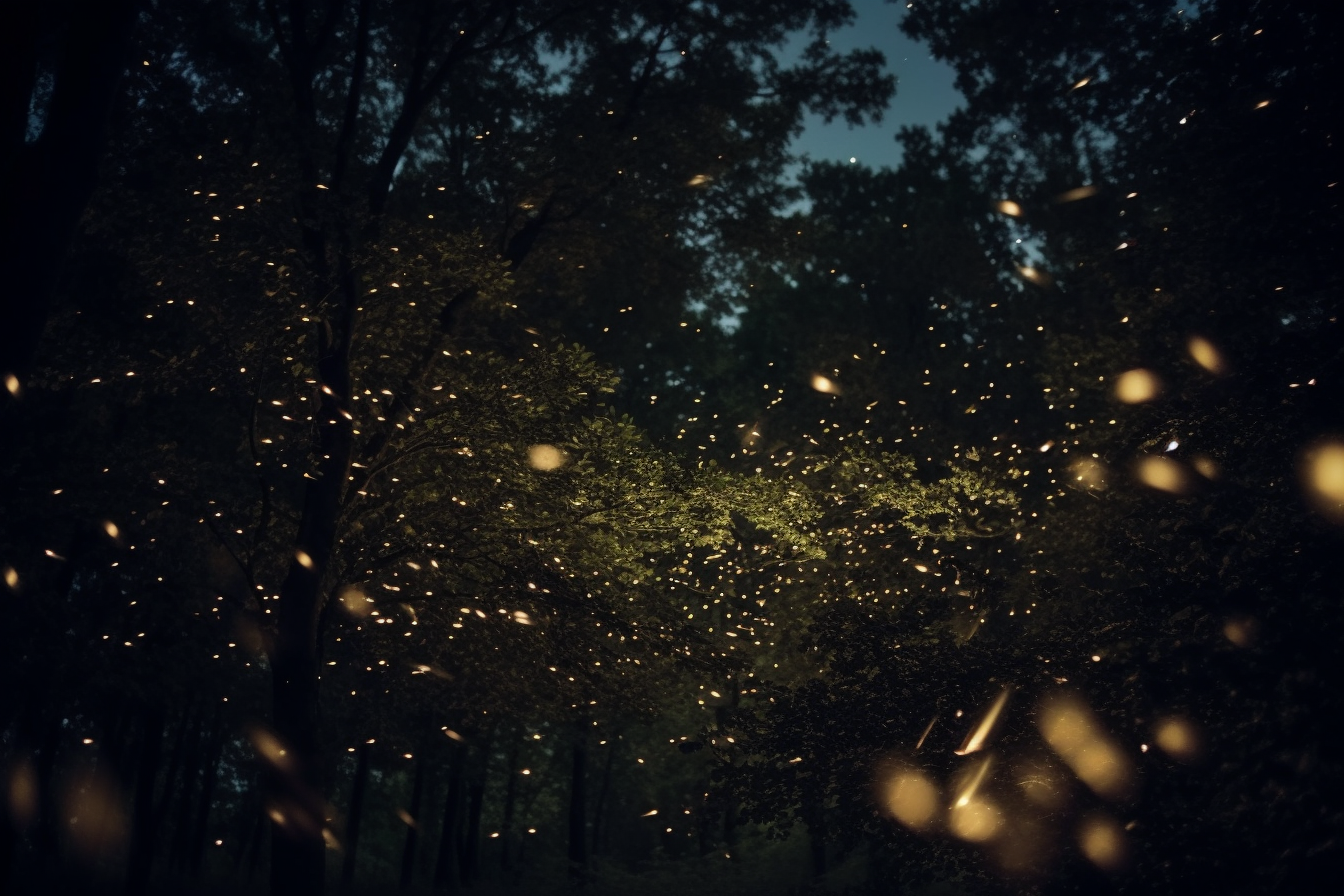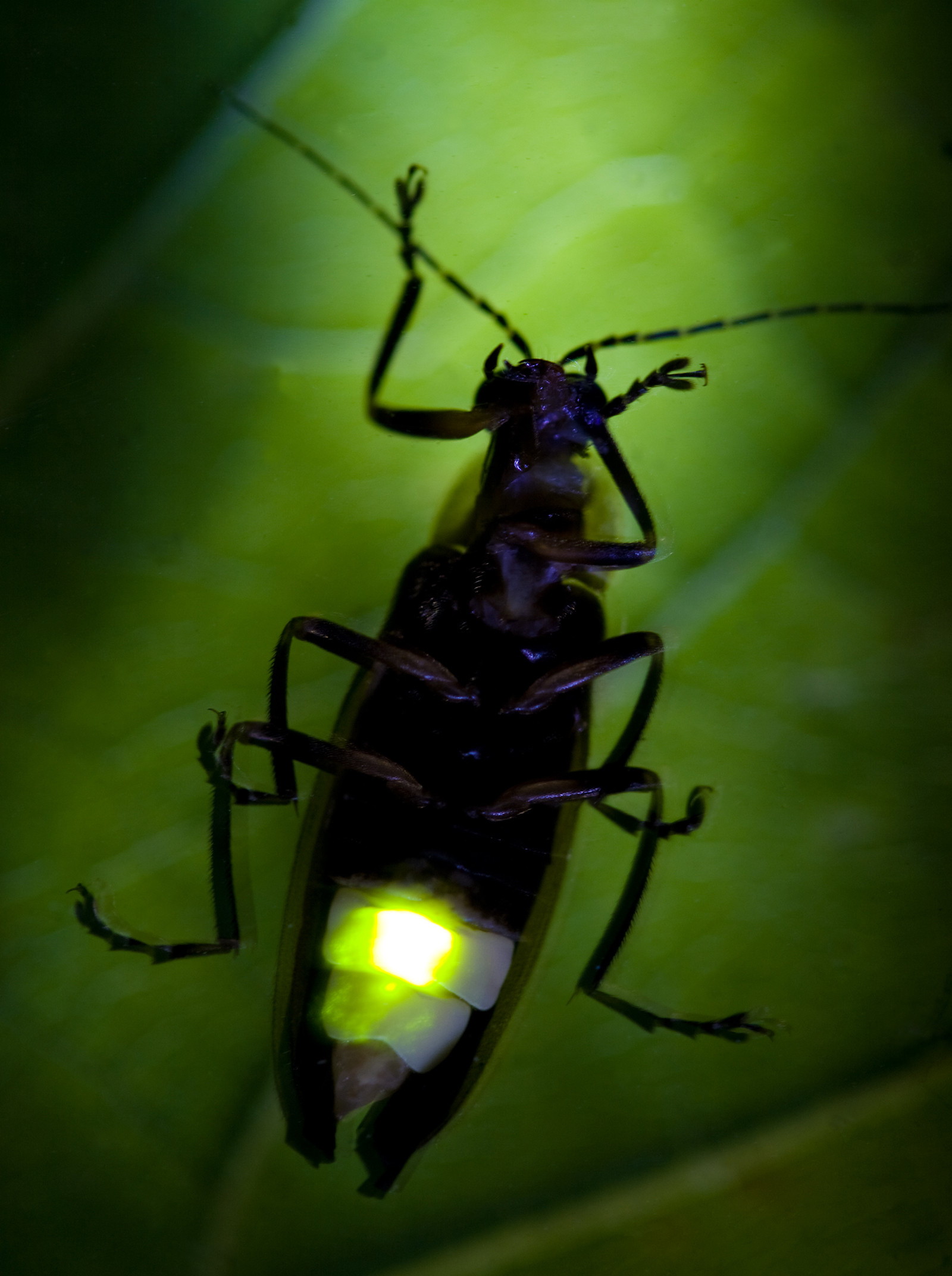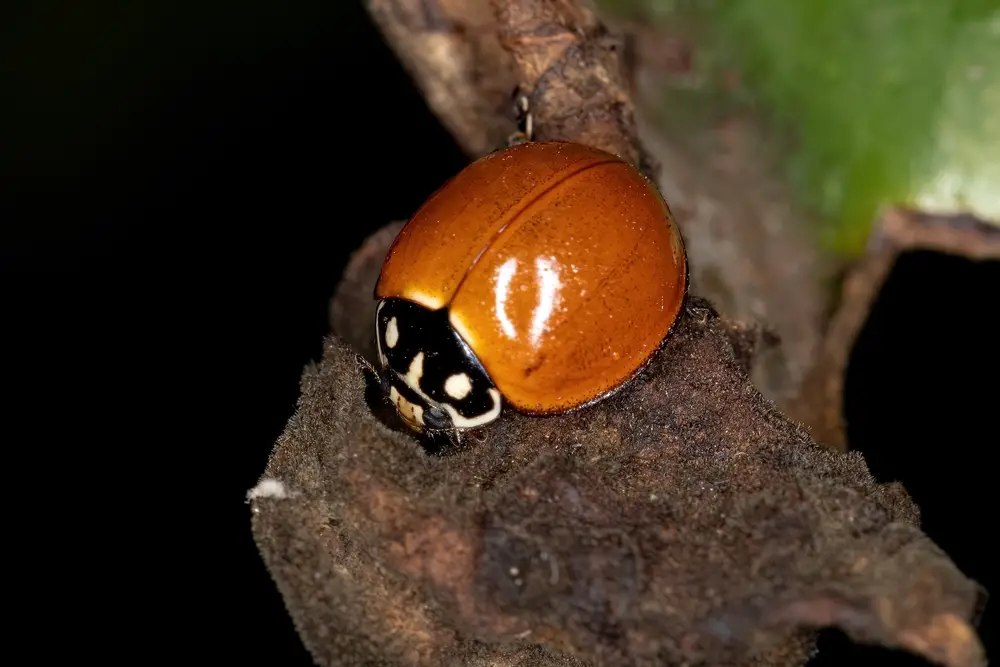
As an avid observer of nature, I find fireflies to be one of the most fascinating and captivating creatures to watch. These enchanting insects light up the night sky, creating a magical atmosphere in the warm summer months. Knowing when fireflies come out can enhance your appreciation for their beauty and help you plan your outdoor activities to catch a glimpse of their mesmerizing light show.
Fireflies typically make their appearance during the early summer, from late May through early August. Their larvae live underground during winter, mature during spring, and then emerge in early summer, usually between the third week of May and the third week of June.
The exact dates that fireflies will emerge can vary each year and depend on factors such as weather and geographic location.
When Fireflies Emerge
I always enjoy observing the delicate glow of fireflies as they light up the summer evenings. These fascinating creatures, which are actually a type of beetle, generally start to emerge from their underground larvae stage around late May through early August. Their emergence tends to coincide with the warmer weather, often appearing from the third week of May to the third week of June when underground temperatures become more hospitable for their development (Forest Wildlife).
It’s quite mesmerizing to watch the woods come alive with hundreds of twinkling lights as night falls. As different species of fireflies make their debut at various times throughout this period, typically from late May until early August, it’s common to observe distinct firefly populations displaying their unique bioluminescence patterns.
Once the adult fireflies emerge, their primary purpose shifts to reproduction, and they dedicate their brief yet magical lives to finding a suitable mate. The radiant flashes we see in the night sky are their way of signaling to attract a compatible partner (ThoughtCo).
Firefly Species and Variations
There is a rich variety of firefly species that grace our landscapes, each with unique characteristics and behaviors. In this section we’ll delve into the synchronization patterns and regional differences that exist among these fascinating creatures.
Synchronization Patterns
The flashing behavior we observe can differ significantly between species. Some species are known to synchronize their flashing patterns, creating a mesmerizing display in the night sky. This synchronization is believed to be a way for these fireflies to communicate and attract a mate. There are also species, such as the Photuris, that engage in predatory behavior, mimicking the flash patterns of other species to find prey. It is both fascinating and humbling to witness these unique communication methods in action.
Regional Differences
Fireflies can be found around the world, with some variation in habitat preferences. They tend to thrive in warm, humid areas, such as tropical and temperate zones, as well as areas with various bodies of water (Firefly.org). Different regions may also observe fireflies emerging at different times within the summer months. For instance, fireflies might start appearing in late May, with sightings continuing until early August.
Fireflies are undoubtedly captivating creatures, and understanding their species variations and regional differences provides a fascinating lens through which to appreciate these glowing wonders of nature.

The Science Behind Bioluminescence
Light Production Mechanism
Fireflies produce light through a process called bioluminescence, which involves a chemical reaction within the insect’s body. The two main components required for this reaction are luciferin, a heat-resistant compound, and luciferase, a bioluminescent enzyme that facilitates the emission of light (Prevention).
When oxygen combines with calcium, adenosine triphosphate (ATP), and luciferin, it produces light. The role of luciferase in this process is to encourage the reaction and help convert the chemical energy into light energy as efficiently as possible.
Factors Affecting Light Display
Air supply plays a significant role in the process of bioluminescence. As air is directed to the compounds in the firefly’s light organ, it results in the emission of light (Prevention).
Another essential element is environmental temperature, which affects the fireflies’ bioluminescence. In general, their glow tends to be brighter and more frequent on warmer nights.
Lastly, the purpose behind a firefly’s light display is often related to communication, specifically in attracting mates. Each firefly species has a unique flashing pattern, enabling them to find potential partners belonging to the same species.
Overall, the bioluminescence in fireflies has always been a captivating aspect of nature, and understanding its scientific mechanisms adds even more intrigue to these amazing insects.
Firefly Life Cycle
Like many other insects, fireflies undergo a complete metamorphosis which consists of four stages: eggs, larvae, pupae, and adults.
Eggs
Fireflies start their lives as eggs. In midsummer, female fireflies lay around 100 spherical eggs either in the soil or near the surface. The eggs then develop for a few weeks before hatching into larvae (ThoughtCo).
Larvae
The larval stage is the longest in a firefly’s life cycle, lasting between a couple of months to two or three years. During this stage, they are voracious predators of soft-bodied invertebrates such as snails, slugs, and worms.
Pupae
After the larval stage fireflies will enter the pupal stage. This is the transformation stage before they become adults. Information on the duration of the pupal stage varies, but it is shorter than the larval stage.
Adults
Once fireflies reach adulthood, their main focus is on mating and laying eggs. Adult fireflies have a short life span, ranging from one to three weeks. During this time they may not eat at all, as their primary objective is to reproduce and lay eggs for the next generation. There’s really no time to lose!
Understanding the firefly life cycle has given me a new appreciation for these fascinating insects and their fleeting presence in our world.
Factors Influencing Firefly Appearance
Weather Conditions
Weather conditions play a significant role in the appearance of fireflies. A wet winter and spring often lead to earlier firefly appearances, while drought during the months leading up to summer can cause them to emerge later than usual (Forest Wildlife). Regardless of the weather, they typically come out sometime within the period of late May through late June.
Habitat
Another factor that influences when fireflies come out is their habitat. Being native to tropical and temperate regions, fireflies thrive in environments that provide plenty of moisture and warmth. Fireflies are commonly spotted inhabiting areas such as:
- Forests
- Grasslands
- Marshes
- Gardens
Furthermore, the presence of vegetation in these environments helps to support the larval stage of fireflies, which feed on slugs, snails, and other creatures found near or under damp leaves. During their adult stage fireflies continue to occupy these types of habitats, as the ample vegetation makes it easier for them to communicate using their bioluminescent light signals while searching for mates.
Conservation and Threats
As a firefly enthusiast, I have been concerned about the various threats that these wonderful creatures face. In this section, I’d like to discuss three major threats to fireflies: habitat loss, light pollution, and pesticide use.
Habitat Loss
One of the main causes of firefly decline is habitat degradation and loss. Many firefly species require specific habitats for their survival, and as these habitats are destroyed or altered, fireflies struggle to adapt to new environments. For instance, some species of fireflies require marshy or wetland areas for reproduction, while others need undisturbed woodlands. As these habitats shrink or change due to human activities, firefly populations suffer (Xerces).
Light Pollution
Another significant threat to fireflies is light pollution. Fireflies use their bioluminescent signals to communicate and find mates. Excessive artificial light can interfere with these signals, making it difficult for fireflies to reproduce successfully. As cities expand and night skies become brighter, firefly populations are negatively affected by the increased light pollution.
Pesticides
Lastly, the widespread use of pesticides poses a significant risk to fireflies. These chemicals can harm both adult fireflies and their larvae, which live in the soil and feed on other insects. Pesticides may also indirectly affect fireflies by reducing their prey’s population, leading to a decline in firefly numbers (Phys.org).
In conclusion, it’s crucial for us to take action to protect firefly habitats, reduce light pollution, and be mindful of pesticide use. By doing so, we can help ensure the survival and continued enchantment of these magical creatures.
Tips for Observing Fireflies
As an avid firefly enthusiast, I’d love to share some useful tips for observing these magical insects. I’ve split up these tips into three sub-sections: Best Times, Recommended Locations, and Viewing Etiquette, to help you have the best firefly watching experience.
Best Times
Fireflies usually appear in mid-June and disappear in early August, with the months leading up to the monsoon season, May and June, being the ideal time to see these fascinating creatures. Because fireflies are nocturnal, their bioluminescent displays are most visible after sunset. You may also spot some early risers at around 4 in the morning.
Recommended Locations
Fireflies typically spend their days on the ground among tall grasses, so choosing a location with plenty of vegetation will increase your chances of spotting them. Some great options include fields, forests, and even your own backyard. You could also participate in a community science project like Mass Audubon’s Firefly Watch, where you can observe fireflies in a coordinated effort with other enthusiasts.
Viewing Etiquette
When observing fireflies, it’s important to be respectful of their natural environment. Keep noise levels to a minimum and avoid disturbing their habitat. Limit the use of flashlights or bright lights, as this can confuse the fireflies and disrupt their mating displays. If you must use a light, consider covering it with red or blue cellophane to minimize its impact on firefly behavior.
Remember that fireflies are fragile creatures – if you catch them, handle them gently and release them promptly after observation. Finally, be mindful not to trample on the vegetation where they may be resting during the day.
Driven by a passion for those tiny creatures that rule our world, we at Bug Domain strive to be your go-to resource for information on insects.




